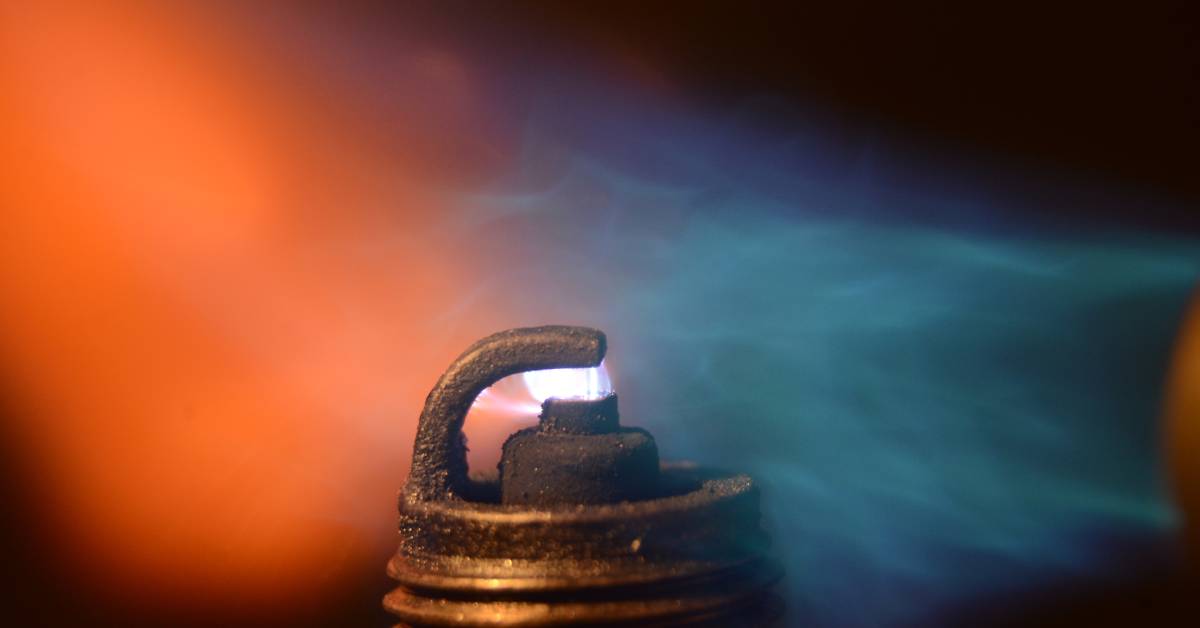
If you’ve peeked under the hood of any vehicle, you’ve likely seen a spark plug. These small components play a big role in the function of combustion engines. Understanding the details of spark plugs will help you optimize engine performance. Keep reading to explore the vital components found in modern spark plugs, from the central electrode to the metal shell and more!
A Brief Introduction to Spark Plugs
First, let’s look at the history of spark plugs. Though introduced over a century ago, their fundamental purpose remains unchanged. Spark plugs ignite the air-fuel mixture in internal combustion engines.
The evolution of spark plugs has paralleled advancements in automotive technology, making them more efficient and reliable than their predecessors. Modern spark plugs can withstand extreme conditions, sparking thousands of times per minute as your engine runs. Whether you’re driving a high-performance car or a family sedan, the spark plug gets your ride going.
The Anatomy of a Spark Plug
With an understanding of spark plugs, we can dive into the vital components that exist in modern units. They haven’t changed much, but you should still familiarize yourself with the basics.

Central Electrode
The central electrode conducts electricity to generate a spark. When the ignition system sends a high-voltage current through the central electrode, it ignites the air-fuel mixture in the combustion chamber. The design and material of the electrode can influence the spark’s strength and consistency, making it integral to the ignition process.
Ceramic Insulator
Surrounding the central electrode is the ceramic insulator, which contains the electrical current until it reaches the tip. The insulator prevents premature discharge of electricity and supports a focused and efficient spark. The ceramic material can withstand high temperatures and pressures within the engine, contributing to the reliability of the spark plug.
Metal Shell
The metal shell is the structural foundation of the spark plug. It provides support and houses the internal components, securing them in place. It also dissipates heat away from the combustion chamber, helping to maintain ideal operating temperatures, prevent overheating, and guarantee the longevity of the spark plug.
Ground Electrode
The ground electrode is opposite the central electrode and creates the spark gap, where ignition takes place. When the electrical current jumps across the gap between the central and ground electrodes, it generates a spark that ignites the fuel-air mixture. The design and distance of the ground electrode influence the efficiency of the ignition process, making it a key factor in engine performance.
Advanced Materials
Many modern spark plugs consist of advanced materials, such as platinum and iridium, for high performance and longevity. These materials improve conductivity and heat resistance while supporting efficient operation under high-stress conditions.
By incorporating these advanced substances, manufacturers can extend the lifespan of spark plugs, reduce maintenance needs, and boost engine efficiency.
Types of Spark Plugs
Mechanics and vehicle owners should understand the many different types of spark plugs and be aware of their benefits for engines.
Copper Spark Plugs
Copper spark plugs are the most common because they provide excellent conductivity. They are most common in old vehicles. While affordable, they tend to wear out faster than their modern counterparts and require more frequent replacements.
Platinum Spark Plugs
Platinum spark plugs offer better longevity than copper models due to the durability of platinum. They exist in many modern vehicles and are quite affordable.
Iridium Spark Plugs
Iridium spark plugs are the pinnacle of spark plug technology, offering the longest lifespan and best performance. Their high melting point makes them ideal for high-performance engines, although they come at a higher price point than other types.
E3 DiamondFIRE Technology Spark Plug
The E3 DiamondFIRE spark plug has a unique design that enhances combustion efficiency through its diamond-shaped electrode. This innovative technology supports a more complete burn of the air-fuel mixture, resulting in improved power, fuel economy, and reduced emissions.
By utilizing a patented design that minimizes carbon buildup, E3 DiamondFIRE spark plugs contribute to longer engine life and better performance. This design and technology enhance any kind of engine spark plug, even spark plugs for lawn mowers!

Choosing the Best Spark Plug
When selecting the appropriate spark plug for an engine, you must consider several factors for optimal performance and longevity. Firstly, think about compatibility with the engine’s design and specifications. This includes matching the heat range, thread size, and reach with the engine manufacturer’s guidelines. Secondly, factor in engine type and application. High-performance engines might require spark plugs with iridium to withstand high heat and pressure.
Additionally, the electrode gap varies between engine types and affects ignition efficiency and combustion dynamics. Environmental considerations, including the typical operating temperatures and exposure to moisture or dust, should also guide the selection process.
A thorough understanding of these factors, alongside consultations with vehicle manuals or professionals, can enhance engine performance in cars, trucks, lawn mowers, ATVs, and boats.
Maintaining Spark Plugs
Taking good care of spark plugs supports engine performance and longevity. Conduct routine checks at regular intervals or whenever you notice an obvious decline in engine efficiency, such as misfires or rough idling. By examining factors such as the color of the insulator and electrode wear, you can diagnose engine issues, including fuel mixture imbalances or ignition system faults.
Replacing Spark Plugs
Replacing spark plugs is straightforward if you have the right tools and a clear understanding of the engine’s layout. The engine should be cool to avoid burning yourself.
- Remove the ignition coil or wire to access the spark plug.
- Using a spark plug socket wrench, gently unscrew the old plug from its chamber, taking care not to damage the threading.
- Before installing the new spark plug, check the gap and adjust it according to manufacturer specifications.
- Hand-thread the new plug to prevent cross-threading, then tighten it with the wrench without over-torquing.
- Reattach the ignition coil or wire and repeat the process for all plugs, following a sequential pattern.
Find Advanced and Modern Spark Plugs at E3 Spark Plugs
Spark plugs are small components in combustion engines, but they play a big role in performance and efficiency. Replacing the spark plugs can significantly enhance your vehicle’s reliability. Whether you’re an experienced mechanic or you want to learn more about engines, you should understand the mechanics of spark plugs. E3 Spark Plugs offers a variety of high-quality options to meet your needs. Explore our selection to see the difference a quality spark plug can make!







